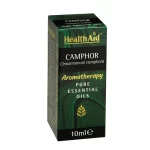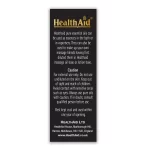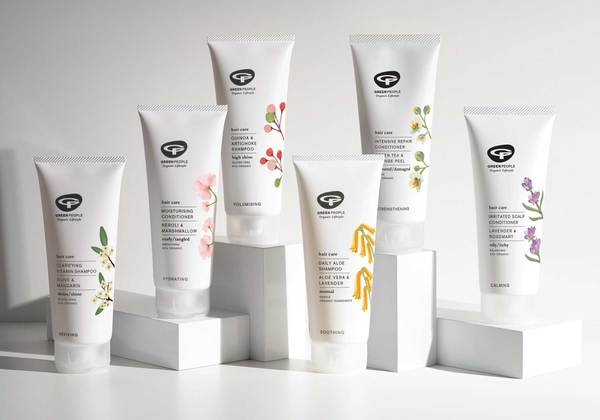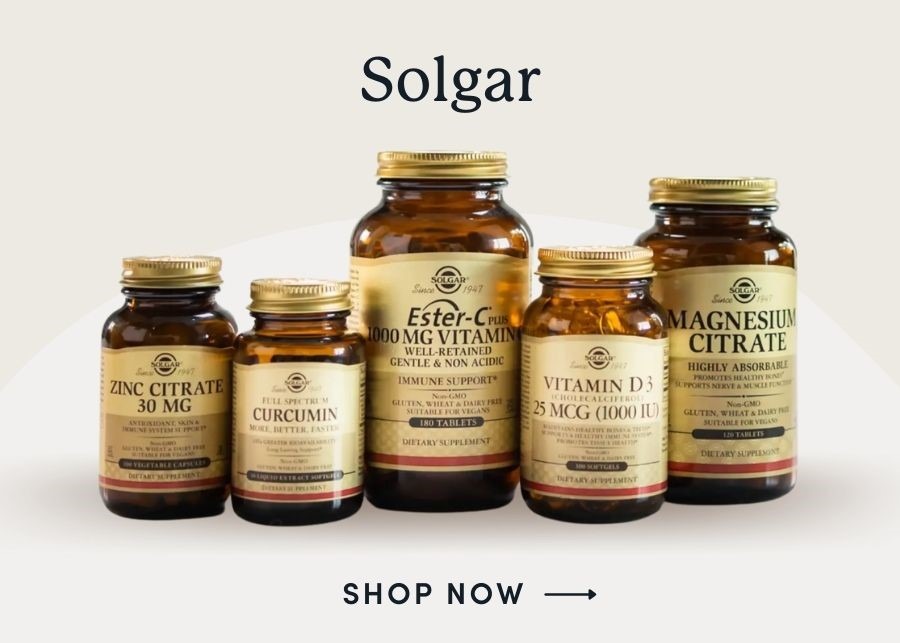





Camphor Oil 10ml HealthAid
£8.99 Original price was: £8.99.£7.64Current price is: £7.64.
Camphor Oil
HealthAid Camphor oil is a white, crystalline substance with a strong aroma. It is obtained from the wood of the camphor tree (Cinnamomum camphora) or synthesized from turpentine oil. Here are some key points about camphor:
1. **Aroma:**
– Cinnamomum oil has a distinctive, aromatic odor that is often described as medicinal or minty. It has a cooling sensation when smelled.
2. **Sources:**
– **Natural Source:** Cinnamomum oil is naturally found in the wood of the camphor tree. The tree is native to East Asia but is also cultivated in other regions.
– **Synthetic Source:** Most of the Cinnamomum used commercially is synthesized from turpentine oil derived from pine trees.
3. **Uses:**
– **Medicinal Use:** Cinnamomum has a long history of use in traditional medicine for its perceived medicinal properties. It has been used in topical products, such as ointments and balms, for its cooling and analgesic effects.
– **Aromatherapy:** Cinnamomum oil is used in aromatherapy for its invigorating and refreshing scent. It is believed to help clear the mind and promote a sense of alertness.
– **Insect Repellent:** Cinnamomum has insect-repelling properties, and camphor-containing products are sometimes used to deter insects.
– **Manufacturing:** Cinnamomum is used in the manufacture of various products, including plastics, explosives, and pharmaceuticals.
4. **Topical Application:**
– Cinnamomum is often included in topical products, such as creams, ointments, and balms, for its potential pain-relieving and anti-inflammatory effects.
– It should be used cautiously on the skin and diluted in a carrier oil to avoid skin irritation.
5. **Toxicity and Safety:**
– While Cinnamomum has various uses, it is important to note that ingesting or applying large amounts of pure Cinnamomum can be toxic and should be avoided.
– Ingesting Cinnamomum-containing products can lead to serious health issues, including seizures.
6. **Camphorated Products:**
– Cinnamomum is often found in products labeled as “camphorated” or “Cinnamomum oil.” These may include chest rubs, muscle balms, or vaporizing ointments.
7. **Regulation:**
– Due to safety concerns, the use of Cinnamomum is regulated in some regions. In the United States, for example, the FDA regulates the concentration of Cinnamomum in over-the-counter products.
8. **Alternative Uses:**
– Cinnamomum is sometimes used in household products such as mothballs, where its insect-repelling properties are utilized.
It’s essential to follow product instructions and use Cinnamomum-containing products with caution.
If you have specific health concerns or conditions, it’s advisable to consult with a healthcare professional before using Cinnamomum-based products.

















Reviews
There are no reviews yet.